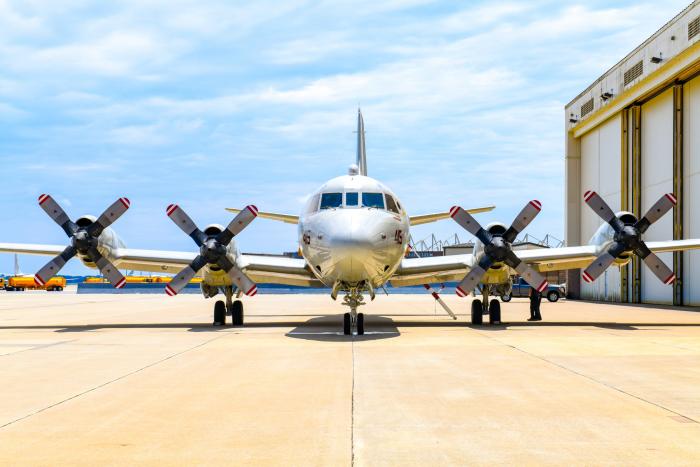The US Navy’s Patrol Squadron 30 (VP-30) ‘The Pro’s Nest’ hosted a sundown ceremony to bid farewell to its final Lockheed P-3C Orion maritime patrol aircraft (MPA) at NAS Jacksonville in Florida on June 23, bringing to an end more than 60 years of operations with the type.
The sundown ceremony both marked the end of the Orion’s operational service with VP-30, which serves as the US Navy’s Maritime Patrol and Reconnaissance Fleet Replacement Squadron (FRS) and provides specific training to pilots, naval flight officers and enlisted aircrew prior to them joining frontline fleet units, while also commemorating the platform’s 62 years of active US military service. During this ceremony, VP-30’s last P-3C (BuNo 161415 ‘LL-415’) departed NAS Jacksonville – using the callsign ‘VVLL01’ – for Davis-Monthan AFB, Arizona, where it will be kept in long-term storage at the famous Boneyard with the 309th Aerospace Maintenance and Regeneration Group (AMARG).

Commenting on the Orions lengthy service to VP-30 and the wider US Navy, Capt Dennis Jensen – a US Navy pilot and the prospective Commodore of Task Force 57, which is homeported in Manama, Bahrain – said: “When you think of the different platforms used in the Navy, there aren’t too many that make it past the half-century barrier. The P-3 is one of five aircraft in the history of naval aviation to break that barrier. As the mission changed and as the focus changed and the nation called on us to do something else, we did not stay stuck in the past, we adapted the aircraft. It is because of that adaptability and flexibility this platform has stood the test of time.”
While VP-30 has now ceased training new crews on the P-3C, it remains responsible for training aircrews to operate the Boeing P-8A Poseidon MPA (the Orion’s successor) and Northrop Grumman MQ-4C Triton high-altitude, long-endurance (HALE) surveillance UAV at Jacksonville. Although the US Navy has retired most of its ageing Orion fleet, modified variants of the type remain operational with Scientific Development Squadron 1 (VXS-1) ‘Warlocks’ (NP-3C) at NAS Patuxent River, Maryland; and Fleet Air Reconnaissance Squadron 1 (VQ-1) ‘World Watchers’ (EP-3E Aries II) at NAS Whidbey Island, Washington. VQ-1 is slated to withdraw its EP-3E fleet in 2025.

